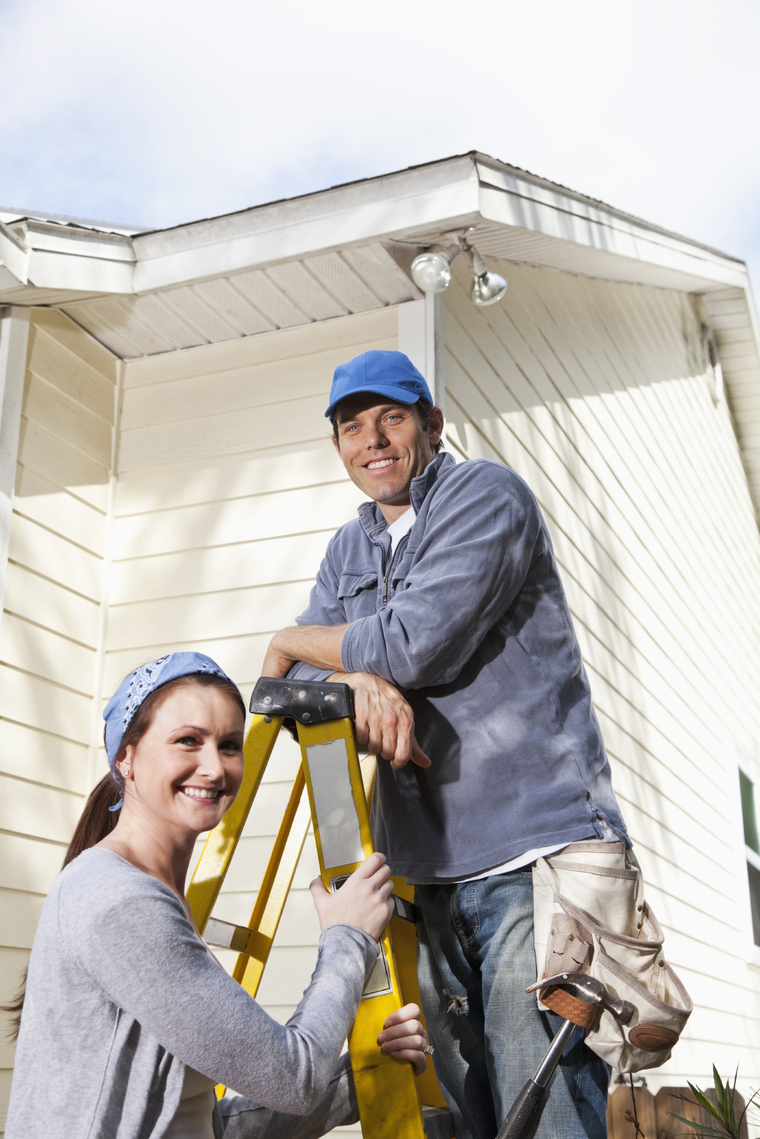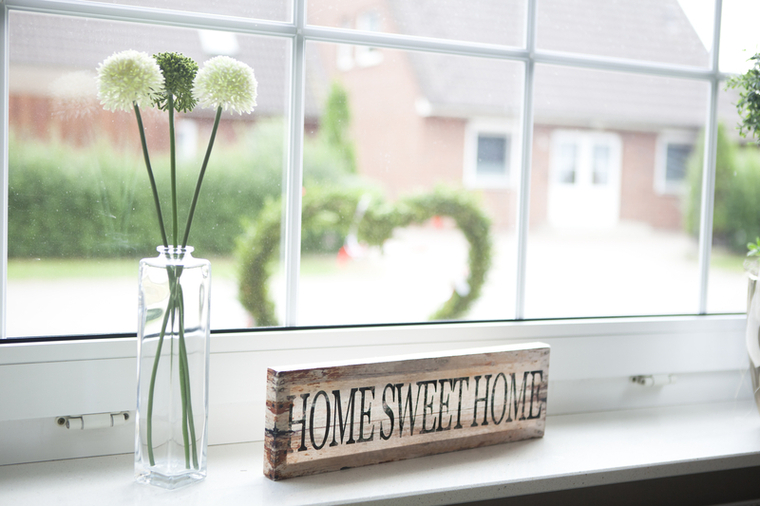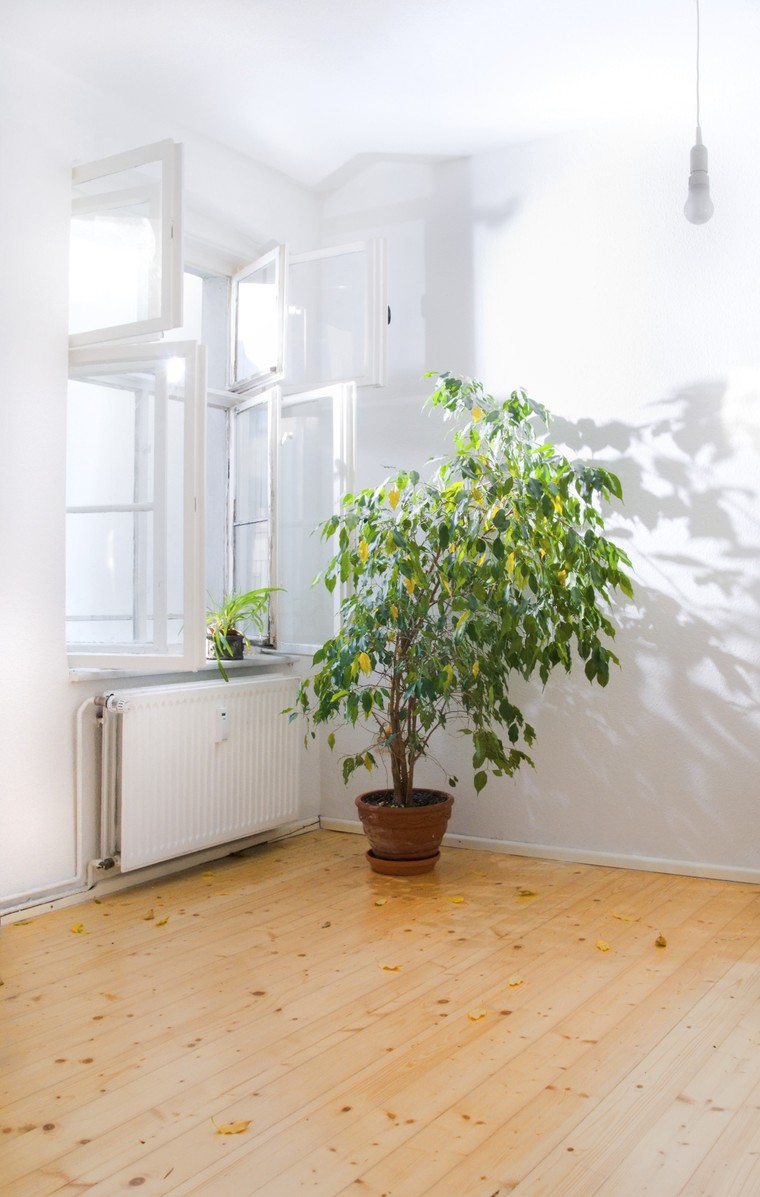How to Save Energy in your Home


With the increased emphasis on global warming in recent years, combined with rising energy costs, more and more people are asking what they can do to make their homes more energy efficient. Energy conservation can be as simple as closing your curtains at night, changing a light bulb, turning down your thermostat, or closing the fireplace damper. Many of the most inexpensive solutions quickly pay for themselves in conservation, which you ultimately benefit from when you get your power bill.
One of the biggest ways you can conserve energy is to take advantage of “off-peak” hours. This is a step that everyone can take because it simply involves shifting your power use of major appliances, such as washing machines, dryers, and dishwashers. Puget Sound Energy recommends using these appliances outside of peak hours—peak hours are between 6am-10am and 5pm-9pm. Studies show that by shifting a portion of your energy use, consumers can significantly lower wholesale electricity prices, which saves everyone money in the long run.
Another way you can save energy is by washing your clothes in cold water and only running full loads. When using the dryer, toss in a couple of dry towels with your clothes to help speed up the drying process. It’s also important to clean the lint trap in your dryer after every load and make sure the dryer hose and vent are clear.
There are several steps you can follow to reduce your home’s demand on heating during the winter months. Conventional measures, such as setting back your thermostat, are effective at reducing energy consumption. It is recommended that you keep your thermostat set between 65 and 72 degrees during the winter months. Keep in mind that by simply lowering your thermostat one degree, your furnace will use seven percent less energy overall. It’s also important to clean your furnace filter frequently—doing so will enable your heating system to run more efficiently and cost-effectively.
It’s estimated that lighting accounts for 10 percent of your overall home energy bill, so another way you can conserve is by using energy-saving fluorescent light bulbs, known as CFL light bulbs. CFLs use approximately one-quarter of the energy of equivalent incandescent bulbs, they give off warm, indirect light, and they last ten times longer than average light bulbs. When shopping for CFLs, look for those with the Energy Star label on them—this ensures that you’re purchasing a product that has been approved by the U.S. Environmental Protection Agency (EPA) and the U.S. Department of Energy (DOE).
For more information about energy conservation, please visit www.energystar.org.
For more information on Windermere Evergreen, please contact us here.
Is a “home exchange” vacation right for you?

It is finally summer; time for barbecues, summer camp, and family vacations. In recent years we’ve heard of people shortening their vacations, staying closer to home, or going nowhere at all for “staycations”. Another way to save money, while still getting away, is to leverage your own home for a home exchange.
A home exchange—often called “house-swapping”—is a money-smart vacation idea that’s been around for a long time. With virtually everyone feeling the economic squeeze, some exchanges are more popular than ever before.
Why a home exchange? Since accommodations are usually the priciest part of a vacation, a home exchange saves money, allowing travelers to take longer vacations and perhaps splurge a bit on dining, tours, or shopping. Larger families appreciate how homes meet their needs for space, meals, and a good night’s sleep. And, home-swappers often say they enjoy “living like the locals,” especially when traveling internationally.
How it works. The basic idea of a home exchange is that two families agree to live in each other’s home (usually at the same time) at no cost—it’s considered an even trade. Exchangers find one another via home exchange website that provides detailed listings of available homes. Exchanges take place within the United States or internationally, and the length of stay is whatever the parties agree upon. Exchangers typically do not meet in person but get acquainted via phone calls and emails before the exchange happens. Details, including pets, the use of a car, and cleaning are all agreed upon ahead of time, usually in a written contract provided by the website.
What makes a house desirable? You might be surprised! As a general rule, home exchangers are looking for location, location, location. They want to explore attractions in your area, attend an event, or visit family. A beachfront house in California is highly desirable, as is a condo in an exciting city—and even a home in the suburbs will appeal to the right travelers. Because swappers are primarily looking for a convenient jumping-off point for their adventures, your home’s age, floor plan, and furnishings don’t matter too much, as long as it’s clean, comfortable, and accommodating.
Vacation homes are ideal. Whether it’s a rustic cottage on a secluded fishing lake or a condo at a popular ski area, a second home is ideal for exchanges. Logistically, you don’t have to vacate your primary residence, and you have more flexibility as to when the swap can happen. For this reason, many retirees—who often own second homes and enjoy freer schedules—find home exchanges especially appealing.
First steps. If you’re intrigued, start by exploring a few websites; you can view a lot of information for free. Home exchange websites typically charge an annual membership fee of $50 to $100 to list your home. If you decide to join a service, you’ll provide several photos and a detailed description of your home. You’ll also post your desired destination(s) and travel dates, and you’ll be able to peruse the homes that meet your criteria. It’s common to trade information with several homeowners before finding just the right match, and the process may take several months.
Focus on the basics. Once you’ve agreed to an exchange and are preparing your home for guests, think about what makes a hotel room enjoyable. A clean, clutter-free home is universally appealing, and comfortable mattresses and attractive bedding are a must. Your kitchen should be well organized, and internet access is a big plus. Your guests know they’re staying in someone’s home, so don’t worry about scuffed baseboards and well-worn furniture. Likewise, don’t expect five-star accommodations when you step into your host’s home.
Is a home exchange right for you? If the very thought of others living in your home and sleeping in your bed—or you in theirs—makes your palms go clammy, an exchange is probably not for you. But many travelers are hooked!
What are your summer vacation tips?
For more information on Windermere Evergreen, please contact us here.
Indoor gardens: cultivate while keeping the winter doldrums at bay

In many parts of the country it is still too early to start thinking about gardening. After a chilly winter, adding some green to your home’s interior may be just what the doctor (or decorator) ordered. Consider an indoor garden to liven up your home with color and clean air. There are many ways to introduce houseplants into your home décor, from edible to ornamental. Here are some tips to get you started:
Cultivate herbs or fungi on your windowsill.
Create or find an indoor greenhouse:
Or maximize your space with a hydroponic tower:
Plant a lemon tree, or a whole orchard:
Make a statement with a hanging garden:
Keep your houseplants in unexpected rooms:
If you have young children or pets, you will want to consider the toxicity of some of your plant choices.
Indoor plants have their benefits, including cleaning the air you breathe. Some plants are more effective at recycling the CO2 in your home than others.
We’d love to hear your tips for adding indoor plants and gardens.
Check out more home ideas on our Pinterest page.
For more information, please visit Windermere Evergreen.
Windermere Evergreen’s Grand Opening


Windermere Evergreen held it’s Grand Opening on Friday, February 16th. It was a great event and we were joined by many close friends, co-workers and family. Evergreen Chamber of Commerce was at the event, for a ribbon cutting ceremony. Inspired fitness our new neighbors in the building, joined us as well in celebrating their Grand Opening at the same time. It was a successful event and we are very excited to be “officially” open for all of your Real Estate needs! Thank you everyone for coming out to celebrate with us!
How long should they last?

 Nothing in life lasts forever – and the same can be said for your home. From the roof to the furnace, every component of your home has a life span, so it’s a good idea to know approximately how many years of service you can expect from them. This information can help when buying or selling your home, budgeting for improvements, and deciding between repairing or replacing when problems arise.
Nothing in life lasts forever – and the same can be said for your home. From the roof to the furnace, every component of your home has a life span, so it’s a good idea to know approximately how many years of service you can expect from them. This information can help when buying or selling your home, budgeting for improvements, and deciding between repairing or replacing when problems arise.
According to a National Association of Home Builders (NAHB)study, the average life expectancy of some home components has decreased over the past few decades. (This might explain why you’re on your third washing machine while Grandma still has the same indestructible model you remember from childhood.) But the good news is the life span of many other items has actually increased in recent years.
Here’s a look at the average life spans of some common home components (courtesy of NAHB).
Appliances. Of all home components, appliances have the widest variation in life spans. These are averages for all brands and models, and may represent the point which replacing is more cost-effective than repairing. Among major appliances, gas ranges have the longest life expectancy, at about 15 years. Electric ranges, standard-size refrigerators, and clothes dryers last about 13 years, while garbage disposals grind away for about 10 years. Dishwashers, microwave ovens, and mini-refrigerators can all be expected to last about nine years. For furnaces, expect a life span of about 15 years for electric, 18 for gas, and 20 for oil-burning models. Central air-conditioning systems generally beat the heat for 10 to 15 years.
Kitchen & Bath. Countertops of wood, tile, and natural stone will last a lifetime, while cultured marble will last about 20 years. The life span of laminate countertops depends greatly on use and can be 20 years or longer. Kitchen faucets generally last about 15 years. An enamel-coated steel sink will last five to 10 years; stainless will last at least 30 years; and slate, granite, soapstone, and copper should endure 100 years or longer. Toilets, on average, can serve at least 50 years (parts such as the flush assembly and seat will likely need replacing), and bathroom faucets tend to last about 20 years.
Flooring. Natural flooring materials provide longevity as well as beauty: Wood, marble, slate, and granite should all last 100 years or longer, and tile, 74 to 100 years. Laminate products will survive 15 to 25 years, linoleum about 25 years, and vinyl should endure for about 50 years. Carpet will last eight to 10 years on average, depending on use and maintenance.
Siding, Roofing, Windows. Brick siding normally lasts 100 years or longer, aluminum siding about 80 years, and stucco about 25 years. The life span of wood siding varies dramatically – anywhere from 10 to 100 years – depending on the climate and level of maintenance. For roofs, slate or tile will last about 50 years, wood shingles can endure 25 to 30 years, metal will last about 25 years, and asphalts got you covered for about 20 years. Unclad wood windows will last 30 years or longer, aluminum will last 15 to 20 years, and vinyl windows should keep their seals for 15 to 20 years.
Of course, none of these averages matter if you have a roof that was improperly installed or a dishwasher that was a lemon right off the assembly line. In these cases, early replacement may be the best choice. Conversely, many household components will last longer than you need them to, as we often replace fully functional items for cosmetic reasons, out of a desire for more modern features, or as a part of a quest to be more energy efficient.
Are extended warranties warranted?
Extended warranties, also known as service contracts or service agreements, are sold for all types of household items, from appliances to electronics. They cover service calls and repairs for a specified time beyond the manufacturer’s standard warranty. Essentially, warranty providers (manufacturers, retailers, and outside companies) are betting that a product will be problem-free in the first years of operation, while the consumer who purchases a warranty is betting against reliability.
Warranty providers make a lot of money on extended warranties, and Consumers Union, which publishesConsumer Reports, advises against purchasing them. You will have to consider whether the cost is worth it to you; for some, it brings a much needed peace of mind when making such a large purchase. Also, consider if it the cost outweighs the value of the item; in some cases it may be less expensive to just replace a broken appliance than pay for insurance or a warranty.
For more information on Windermere Evergreen, please contact us here.
Practical Resolutions: Making Your House a Home


Your home is a reflection of your tastes, your lifestyle and your ambition, and many of us are regularly transforming our homes one way or another to fit our adjusting needs. Whether it is refreshing a room to fit your style, reorganizing a closet to accommodate the holiday excess, going green to save the planet and a couple of bucks or a complete renovation of your kitchen- homes take maintenance. Some projects come about on a whim, but if you have any plans to make your nest nestier here are some ideas for not getting too overwhelmed by the process- no matter how large or small the changes you want to make:
Get Organized: Whether it is your closets, books, pantry or your entire basement identifying the problem is the first step. Once you know where to focus your energy think about the purpose your space should fulfill, what you want it to look like and how you can keep it organized for the long-term. Sometimes getting organized is a matter of doing a little bit every day, or it is finding the right storage solution. Once you know what the problem is you can identify your steps, timeline and budget. Ultimately, getting rid of the clutter and holding onto items you love the most and use will keep your spaces easy to manage year round.
Do a little every day: Everyone has a different method to managing home madness; some have a weekly cleaning routine, some focus room by room others pile everything in the closet until they have to deal with it. If you have a goal of getting rid of old possessions and clutter, remodeling your home office or keeping your home cleaner spend five to thirty minutes a day working to achieve your goal. Here is a good idea for keeping your home clean by doing a little every day, rather than spending your weekend playing catch up.
Beautification/ Gardening: This year my big goal is to finally start our edible garden, but I have been overwhelmed by all the steps- from finding the right containers for the garden, deciding what to plant, when to start the starts, etc. Each region has different gardening challenges; the plants that thrive in Seattle are different than Spokane or San Diego so if you are planning on a garden make sure you familiarize yourself with local resources that will give you advice specific to your area. If you have any landscaping projects, keep in mind advance planning is paramount to making this affordable, timely and sustainable. If you are planning on putting your house on the market eventually, make beautification a priority and plan your exterior in a way that will increase the curb appeal of your home in the future.
Home Improvement Projects: If you have an ongoing list of home improvement projects, make sure you have the right tools in your toolbox and prioritize and plan. You don’t want to spend every weekend working on dripping faucets so create a routine. When looking at the year ahead, think about seasonality of the projects. It is important to know when to ask for help from a professional in order to have repairs done right in the first place to avoid putting yourself at risk or the safety of your home.
Go Green: If your resolution this year is to save money and the planet by reducing your carbon footprint there are projects you can do large and small. Start with an energy audit, that way you know where your energy is actually being used- you may be surprised. Easy fixes start with replacing light bulbs with CFLs and buying energy cords that limit vampire appliances to use energy when they aren’t in use. If you are replacing your old appliances with newer energy efficient models, make sure you check into recycling programs in your area. Go here for more green resolution ideas.
Renovations: Whether you are doing the renovations yourself or working with a contractor, projects of scale are never easy. Make sure you plan for the inconvenience of going without a kitchen as well as the details of putting your new kitchen in place. Also, before investing in a renovation, make sure you will get a return on your investment when you resell. If you are looking to increase the value and marketability of your home check out this list before you start tearing down walls.
For more information on Windermere Evergreen and our team please contact us here.
The Tax Benefits Every Homeowner Should Know About

 This article originally appeared in Times of San Diego
This article originally appeared in Times of San Diego
The housing market is predominantly very strong and more and more people are becoming homeowners. While there are many intangible benefits to owning a home, such as pride of ownership and setting down roots in the neighborhood, the tangible benefits are just as great. In addition to benefitting from possible appreciation, there are many tax deductions available that help reduce your annual income taxes.
Tax breaks are available for any type of home — single-family residence, town house, mobile home, or condominium. However, to take full tax advantage of owning a home, property owners need to understand the expenses they can deduct, and learn some tips to get the most tax advantages out of home ownership.
Mortgage Interest
A house payment is comprised of two parts: principal and interest. The principal goes toward reducing the amount you owe on your loan and is not deductible. However, the interest you pay is deductible as an itemized expense on your tax return. You can generally deduct interest on the first $1 million of your mortgage. You can also deduct interest on the first $100,000 of a home equity loan.
Property Taxes
Another big part of most monthly loan payments is taxes, which go into an escrow account for payment when the taxes are due. This amount should be included on the annual statement homeowners get from their lenders, along with their loan interest information. These taxes will be an annual deduction as long as the home is owned.
Home Improvements
If using a home equity loan or other loan secured by a home to finance home improvements, these loans will qualify for the same mortgage interest deductions as the main mortgage. Only the interest associated with the first $100,000 is deductible.Making improvements on a home can help you reduce your taxes in two possible ways:
- Tracking home improvements can help when the time comes to sell. If a home sells for more than it was purchased for, that extra money is considered taxable income. You are allowed to add capital improvements to the cost/tax basis of your home. If a home sells for more than it was purchased for plus any capital improvements, that extra money is considered taxable income. Keep in mind that most taxpayers are exempted from paying taxes on the first $250,000 (for single filers) and $500,000 (for joint filers) of gains.
Home Office Deduction
If a homeowner works from home, they can take a deduction for the room or space used as an office. This includes working from a garage, as well as a typical office space.
This deduction can include expenses like mortgage interest, insurance, utilities, and repairs, and is calculated based on “the percentage of your home devoted to your business activities,” according to the IRS.
Home Energy Tax Credits
For homeowners looking to make their home a little greener, the Residential Energy Efficient Property Credit can help offset the cost of energy efficiency improvements. People who install solar panels most commonly take advantage of this credit. Homeowners can save up to 30 percent of the total cost of installing certain renewable energy sources in their home. Even better, this is a credit, which means it directly lowers a homeowner’s tax bill.
Of course, every homeowner’s financial situation is different, so please consult with a tax professional regarding your individual tax liability.
For more information on Windermere Evergreen and our team, please contact us here.
Preparing Your Home for the Winter

 During the winter, it is tempting to curl up and hibernate in bed for the next few months. However, you shouldn’t put off these important home maintenance duties.
During the winter, it is tempting to curl up and hibernate in bed for the next few months. However, you shouldn’t put off these important home maintenance duties.
Clean and check the gutters: While you are on the roof hanging holiday lights, make sure your gutters are clear of leaves, secured to the house, and in good condition. If you do find problem spots, seal, secure, and make note to fix these in the spring. You want to divert water away from your home.
Insulate external water sources: In cold climates pipes can freeze, which can then lead to cracked pipes and flooding. Bring hoses and sprinklers inside for the winter and use insulation to wrap external faucets. Insulating interior pipes can help prevent disaster. If you don’t have insulation, you can keep a faucet dripping during particularly cold days, so water is flowing through the pipes.
Check your water heater: One way to save money during the winter months is to wrap your water heater, so it doesn’t have to use as much energy to keep the water hot in a tank. You should check on your heater to make sure it isn’t leaking and in good repair regularly.
Interior insulation: Keep the heat in and the cold out with increased insulation in your attic and basement. This is an investment, and best done before the winter hits, but can make a big difference in how warm your house feels and how high your heating bill goes.
Check for cracks and leaks: Do you feel a draft? Check the sealing on your windows and doors. You can add weather stripping and silicon to seal these leaks. Foundations can leak as your home settles, so you should also check your basement for water coming through the walls, pipes, and older windows. You will want to seal these appropriately to minimize damage from flooding or mold.
Weatherize your windows: Your windows can be a great source of heat leakage depending on their age and condition. If you have older windows, you can use a clear film to help insulate them during the winter. If you don’t want to film the windows you can install extra thick drapes or curtains to help keep the interior of your home warm.
Check your heating system: What is one thing gas fireplaces, wood burning stoves, and central air heating systems all have in common? They all need to be cleaned and maintained. Check and clean your indoor heating system thoroughly. If you use an old-fashioned wood stove, make sure there are no leaks and that all soot buildup or nests are removed. If a furnace is what you have remember to change the filters as recommended or clean out your reusable filters.
Check your chimney with care: Nothing is as cozy as sitting by the fireplace during the winter, but use with care! Have your chimney checked by a professional to ensure that it’s in good condition and clear of critters or nests. You can also use a creosote log at the start of the season to help break down any old residue.
Invest in home security: The holidays are prime times for burglars looking to score some extra gifts so make sure your home is safe and secure at all times. Check your locks to make sure these are secure and consider a home security system with visible cameras to act as a deterrent. Keep evidence of big gifts hidden from view too. And make sure you discreetly get rid of any large boxes that might alert a prowler that you have new big-ticket items in your home.
Deck the halls and be merry: Decorate your home and prepare for guests. If you have a Christmas tree, keep it from drying out (and creating a fire hazard) by watering regularly. Keep decorative candles and menorahs away from children and flammable materials. You may want to consider battery powered candles, these can be a safe alternative to traditional candles.
Wishing you and yours a happy and safe holiday! For more information on Windermere Evergreen please contact us here.
 Facebook
Facebook
 Twitter
Twitter
 Pinterest
Pinterest
 Copy Link
Copy Link










 Most of us tend to think of air pollution as something that occurs outdoors where car exhaust and factory fumes proliferate, but there’s such a thing as indoor air pollution, too. Since the 1950s, the number of synthetic chemicals used in products for the home has increased drastically, while at the same time, homes have become much tighter and better insulated. As a result, the
Most of us tend to think of air pollution as something that occurs outdoors where car exhaust and factory fumes proliferate, but there’s such a thing as indoor air pollution, too. Since the 1950s, the number of synthetic chemicals used in products for the home has increased drastically, while at the same time, homes have become much tighter and better insulated. As a result, the 
 Love letters are a lost art form, in romance and home buying. Yes, home buying. If you’re a buyer and you want to set yourself apart from other buyers, you might want to state your intentions clearly by declaring your abiding love for the seller’s home in a letter. Here are a few tips for writing a love letter that works (for love letters of a romantic nature, you’re on your own).
Love letters are a lost art form, in romance and home buying. Yes, home buying. If you’re a buyer and you want to set yourself apart from other buyers, you might want to state your intentions clearly by declaring your abiding love for the seller’s home in a letter. Here are a few tips for writing a love letter that works (for love letters of a romantic nature, you’re on your own).